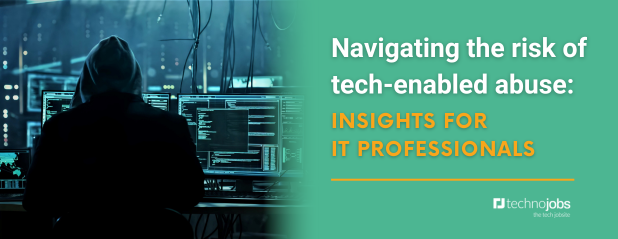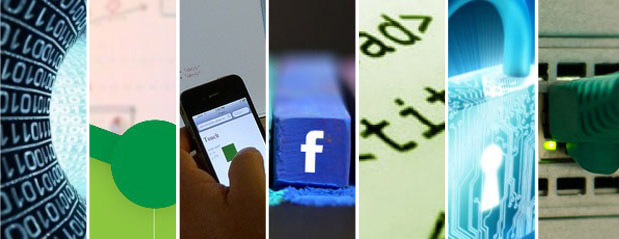Navigating the risk of tech-enabled abuse: insights for IT professionals

Our lives have become increasingly intertwined with various digital devices and platforms. While these innovations have undoubtedly brought digital transformations, they have also created new avenues for data breaches and digital abuse. The issue of technology-enabled abuse has emerged as a pressing concern, prompting Members of Parliament (MPs) to call upon the government to take critical action. The Culture, Media, and Sport Committee's recent report sheds light on the magnitude of this problem and emphasises the urgency of safeguarding individuals from the harmful effects.
How is technology affected?
With the increase in the use of smartphones, social media, smart home devices, and other connected technologies, there has been a transformation the way we communicate, interact, and go about our daily lives. However, these connections have also exposed vulnerable individuals to new forms of abuse that exploit technology's capabilities. The recent report from the Culture, Media, and Sport Committee highlights the alarming rise in cases of tech-enabled abuse, where abusers leverage technology to control, monitor, and manipulate their victims.
There are nearly 24 billion Internet of things (IoT) devices present and in the first six months of 2022, a staggering 1.51 billion IoT breaches were reported, highlighting the scale of the challenge faced by organisations.
What types of tech-abuse can occur?
Tech abuse can come in many forms, from intrusive monitoring through spyware software to cyberstalking and the unlawful exploitation of personal photos. These abusive behaviours frequently take place behind closed doors, leaving victims isolated and trapped in a cycle of fear and manipulation.
What devices can fall victim to tech abuse?
Tech-enabled abuse can manipulate a wide range of digital devices and technologies, potentially turning them into tools of control, surveillance, and manipulation.
Here are some examples of digital devices that could be impacted by tech abuse:
- Smartphones and computers: Abusers may use spyware or monitoring apps to track victims' activities, read messages, and listen in on conversations. They might also gain unauthorised access to email, social media, and online accounts to control or impersonate victims.
- Location-tracking devices: Perpetrators may exploit location-sharing features in smartphones or GPS trackers to monitor victims' movements without their consent.
- Smart home devices: Internet of things (IoT) devices like smart thermostats, cameras, and voice assistant speakers can be misused to invade victims' privacy. Abusers might remotely control these devices to intimidate their victims.
- Webcams and cameras: Webcams on computers or other cameras in the home could be hacked or manipulated to invade victims' privacy and monitor their activities.
- Digital financial tools: Abusers might control victims' finances by gaining access to online banking or payment accounts, restricting their access to funds and resources.
- IoT wearables: Wearable devices like fitness trackers or smartwatches might be misused to monitor victims' activities and gather information about their daily routines.
Who is going to help combat the rise of tech-abuse?
The report from the Culture, Media, and Sport Committee clearly underlines the need for governmental intervention to address the growth tech-enabled abuse. The evolution of technology has outpaced legislation and regulation, leaving a dangerous gap that abusers are able to exploit. MPs are calling on the government to prioritise the development of comprehensive policies and legal frameworks that can effectively tackle this problem.
Raising awareness of tech-abuse
One crucial aspect of combating tech-enabled abuse is raising its awareness and educating the public about the risks associated with technology misuse. Schools, community organisations, and government agencies should collaborate to provide comprehensive digital literacy programs that help individuals to recognise the signs of abuse and protect themselves.
Strengthening the existing legal framework
The existing legal framework must be strengthened to encompass technology-enabled abuse explicitly. This includes criminalising actions such as cyberstalking, non-consensual distribution of intimate images, and the use of spyware to invade a person's privacy. Moreover, legal avenues for reporting and prosecuting such cases should be streamlined and accessible.
Offering support to victims
Victims of tech-enabled abuse often face unique challenges that require support. The government must allocate resources to support victim support services, which could include helplines, counselling, and safe spaces. Collaborations between law enforcement, tech companies, and advocacy groups are crucial in helping the victims.
Regulating the tech industry
The tech industry itself has a role to play in preventing the misuse of its products and services for abusive purposes. Companies should be held accountable for ensuring the security and privacy of their users, and they should actively develop procedures to detect and prevent abusive behaviour on their platforms.
Hiring more cyber security professionals
Hiring additional cyber security professionals is pivotal in addressing the challenges posed by tech-enabled abuse. Their ability to detect, respond to, and mitigate incidents of abuse improves overall digital security, protecting both individuals and companies. Cyber security experts play a critical role in fostering a safer online environment where tech-enabled abuse has little opportunity to succeed by staying ahead of new trends, engaging with the industry, and strengthening security infrastructures.
The Culture, Media, and Sport Committee's report serves as a wake-up call, highlighting the urgency of addressing the growing threat of tech-enabled abuse. It is now the government's responsibility to take swift action to protect vulnerable individuals from technology misuse.




